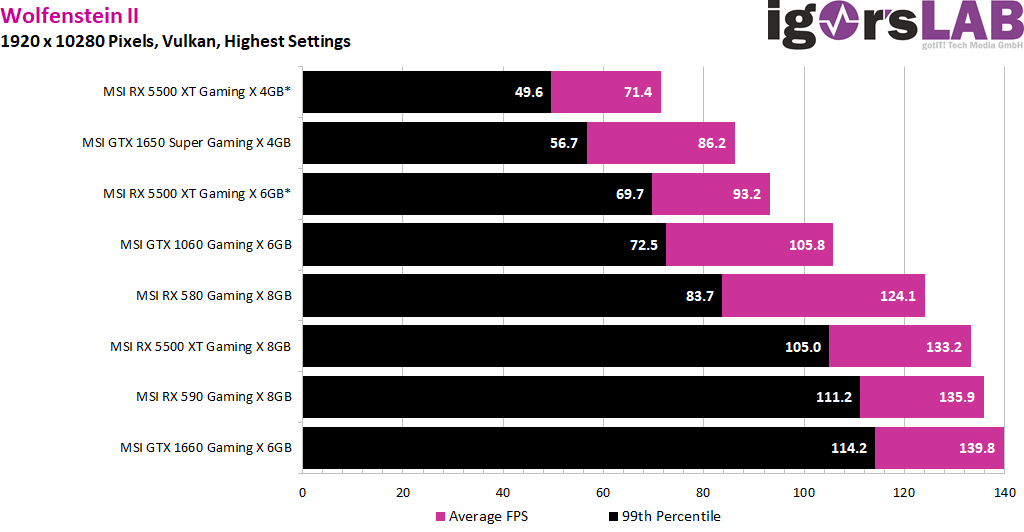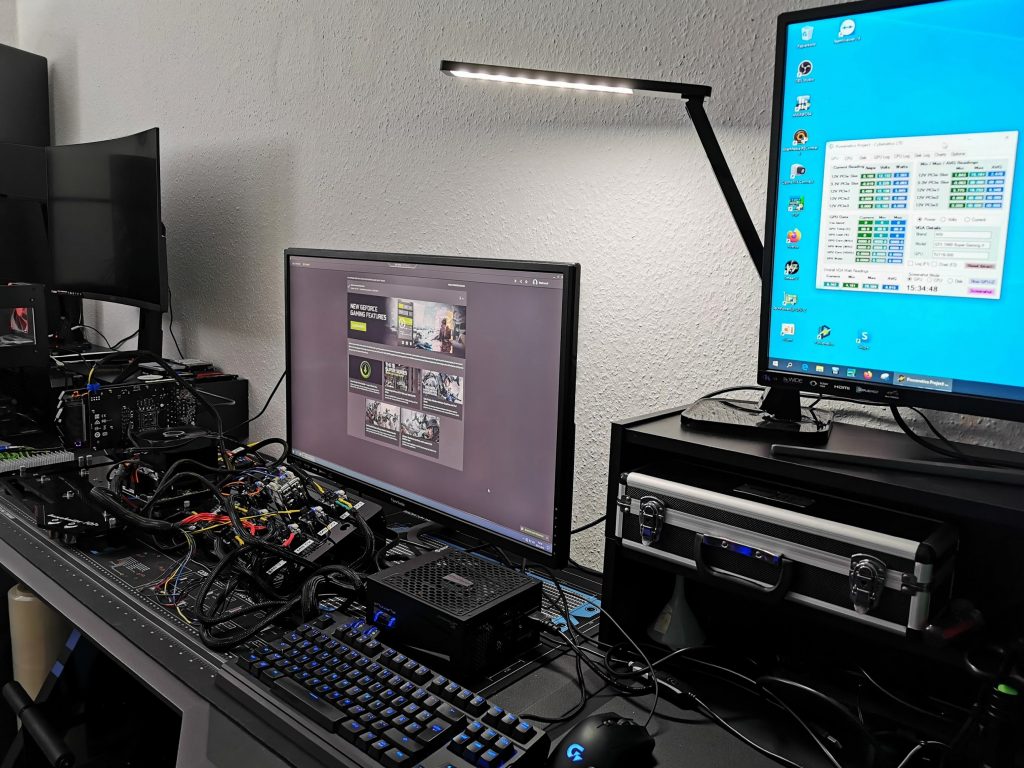How to turn an 8GB card into a model with 6GB or 4GB of available memory
I had already briefly written something about the peculiarity of the arrangement of the respective comparison cards with 4 GB and 8 GB. All of the represented manufacturers have cards with 4 and 8 GB memory, which differ only by the differently sized RAM modules, but are otherwise electrically the same. However, a counter-test with some retail cards led me to take a different path. The differences between the chips, even within a model series, were relatively large when it came to the final clock. In addition, the manufacturers are already going very different ways with the BIOS specifications for the power limit and the cooling concept.
In order not to compare apples and pears when it comes to scenarios without full 4 GB memory utilization, I only used one single 8 GB card, but its memory is limited to 6 GB and later 4 GB in addition to the original run-through. So I can do all benchmarks with the same card and at the end I only have to bother with the tolerance range of the game. The card was always fully warmed up and I took the one from three benchmark runs per game whose result came closest to the average. Completely averaging is not possible because of the Frame Times and variances.

How I did it exactly was described in the article “Trick 17: Reduce free graphics card memory exactly – without system load and driver problems”. And yes, it really works perfectly. And because the whole thing works so well, I emulated a 6 GB variant for a very specific reason, which technically could not have been realized with single modules without emulating a certain GTX 970. But nobody wants that any more nowadays.
In the PR slides for the launch you can also find some extreme examples, where you could realize the fullness of the memory quite nicely and also document it in visible differences in results. But under Full-HD you have to do some pull-ups in the form of extensive settings to make the 4-GB cards vomit, e.g. with uncompressed textures, because normally you don’t notice anything. Once saturated and crammed full, the final frame rate goes terrific to the basement.
Certainly unintentionally one proves with games like Wolfenstein II that the memory management of the Radeons could still be optimized. Even if the GeForce GTX 1650 snaps as expected, it’s still significantly faster than the 4GB version of the RX 5500 XT – despite the same, puny memory configuration. And what about our special 6GB version of the RX 5500 XT? It’s not really that much faster than the GTX 1650 Super with its 4 GB. Look!

As a conclusion one can, however, insert at this point that the chance to encounter such a memory murdering setting in the wild continues to increase. The time of the 4 GB cards is certainly not over yet, but the facade of the perfect Full HD gaming world is already crumbling. On a case-by-case basis, but at least it’s already trickling down many corners. The small expansion of memory will certainly not drive anyone to his grave, but in the near future you will probably have to make more cuts than you might think. And the chance that a 1650 Super Susi will cannibalize away the simple GTX 1660 is also such a myth. Please put 2 GB modules on it, that doesn’t hurt anyone. And just as AMD is currently putting prices on the shelf, there is still room for a little more working brain on the Super.
Test system and analysis software
As always, I benchmark with my own PresentMon GUI and the interpreter software that fills my Excel charts and extrapolates and interpolates the graphical output (and only the graphical output) so that all graphs are exactly long, thus creating a uniform and comparable time line. The remaining evaluations up to percentiles and bar graphs are based on the real raw data from the measurement. The benchmark system is new and has been upgraded in some areas. That’s also why I have completely redesigned all games and cards.
I have also summarized the individual components of the test system in tabular form.
| Test System and Equipment |
|
|---|---|
| Hardware: |
Intel Core i9-9900 K 4x 8GB G.Skill FlareX DDR4 3200 |
| Cooling: |
Alphacool Eisblock XPX (1151), XPX Pro (AM4, 2066) Alphacool Eiswolf (modified) Thermal Grizzly Kryonaut |
| Case: |
Lian Li T70, Raijintek Paean Open Benchtable |
| Monitor: | BenQ PD3220U |
| Power Consumption: |
Non-contact direct current measurement on PCIe slot (riser card) |
| Thermal Imager: |
1x Optris PI640 + 2x Xi400 Thermal Imagers Pix Connect Software Type K Class 1 thermal sensors (up to 4 channels) |
| Acoustics: |
NTI Audio M2211 (with calibration file) Steinberg UR12 (with phantom power for the microphones) Creative X7, Smaart v.7 Own anechoic chamber, 3.5 x 1.8 x 2.2 m (LxTxH) Axial measurements, perpendicular to the centre of the sound source(s), measuring distance 50 cm Noise emission in dBA (slow) as RTA measurement Frequency spectrum as graphic |
| OS: | Windows 10 Pro (1909, all Updates) |
- 1 - Introduction and Overview
- 2 - 8 GB vs. 4 GB, important info and test system
- 3 - Tear Down: PCB and components
- 4 - Tear Down: cooling system
- 5 - DirectX 11: GTA V
- 6 - DirectX 11: Far Cry 5
- 7 - DirectX 12: Shadow of the Tomb Raider
- 8 - DirectX 12: F1 2019
- 9 - DirectX 12: Total War: Three Kingdoms
- 10 - DirectX 12: Tom Clancy's The Division 2
- 11 - DirectX 12: Metro Exodus
- 12 - Power consumtion and real PSU recommendation
- 13 - Clock rates, overclocking and temperatures with infrared
- 14 - Fan curves,fan speed and noise with audio-chamber test
- 15 - Summary and conclusion



































Kommentieren